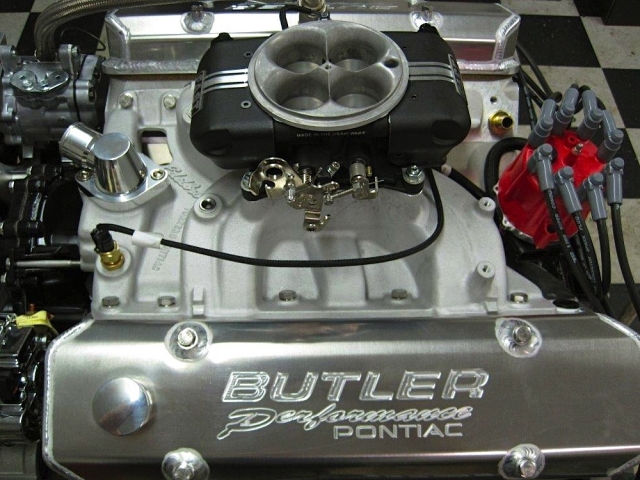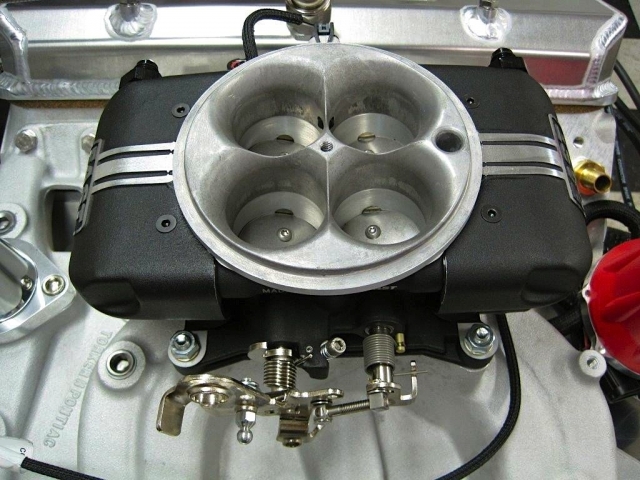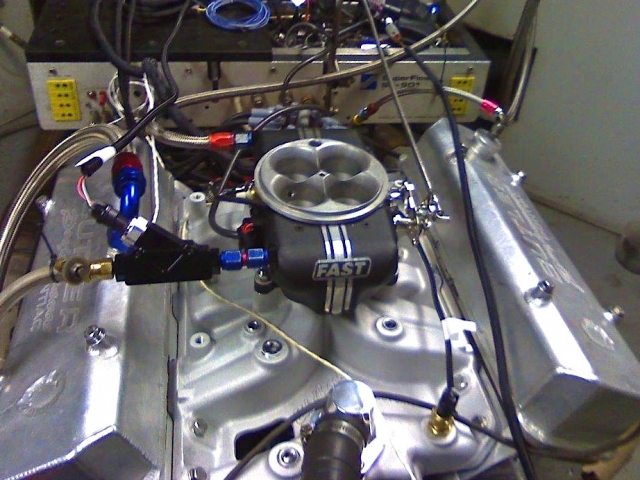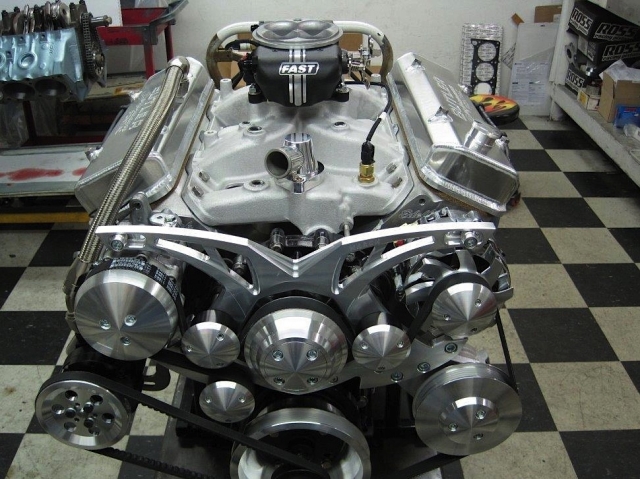 [1]The new FAST [2] EZ-EFI 2.0 system is starting to ship to customers, and at least one back-to-back dyno test has demonstrated the potential for an overall power increases in addition to benefitting from the self-learning tuning features on the EZ systems.
[1]The new FAST [2] EZ-EFI 2.0 system is starting to ship to customers, and at least one back-to-back dyno test has demonstrated the potential for an overall power increases in addition to benefitting from the self-learning tuning features on the EZ systems.
Butler Performance [3] of Leoma, Tennessee, recently built a Pontiac 400 stroker engine for a customer’s street vehicle and performed A-B dyno tests with the original EZ-EFI and the new EZ-EFI 2. EngineLabs [4] has previewed the new EZ-EFI 2 system from SEMA [5] and PRI [6], and we have featured the installation of the original EZ-EFI [7].
 [8]
[8]The EZ-EFI 2.0 throttle body features eight integrated fuel injectors and is good for up to 1,200 horsepower.
Basically, the EZ-EFI 2 is a bolt-on throttle body with eight integrated injectors, good enough to support the airflow and fuel needs of a 1,200-horsepower engine. Controlling the fuel is a new ECU with self-tuning programming that allows fast startup and is always in a constant learning mode to provide optimum performance, fuel economy and drivability. The new FAST ECU will work either generation throttle body or an intake manifold set up with multi-port injection. It can also work with E85, if the fuel system is set up to handle ethanol. Installation takes about a day and requires an electric fuel pump and mounting location in the headers or exhaust downpipe for the O2 sensor.
“I don’t want to say the 2.0 will make more horsepower based on just one test,” notes David Butler. “We’ve built lots of engines with the original EZ-EFI and they work great. But with this particular engine and with these two EFI systems, the 2.0 made more power.”
Baseline with the EZ-EFI 1.0 made 561 horsepower while the 2.0 system stepped up to 580 horsepower with 580 lb-ft peak torque.
“We’ve done back-to-back with the 1.0 and carburetors and they’re both pretty close,” adds Butler. “Depending on the application, normally you might find a little more peak power with a carb. But, again, I can’t imagine it will make more than the 2.0.”
The test engine is based on a 400 block with a 4.250-inch stroke crank, resulting in a final displacement of 461ci. Under the EZ throttle bodies were an Edelbrock Torker II intake and set of Edelbrock [10] Performer RPM heads that Butler Performance massaged slightly to flow 315 cfm through the intake. Compression ratio is 10.5:1, and the tests were conducted with 93 octane pump gas.
“Cam was a hydraulic roller with duration in the 240s at .050, with lift around .540” notes Butler.
Rodney Butler conducted the dyno tests at Butler Performance.
“It was up about 15 horsepower on the average,” he says. “It didn’t roll off on the way up to 6,300 rpm. The old system starts to roll off at 5,900 or 6,000. This one held the power at a higher rpm. I’m guessing it’s a better flowing throttle body and maybe better atomization with eight injectors.”
Butler also says the handheld color display was easy to use and notes the new system offers separate controls for timing and nitrous.
“We’ll be dyno’ing a 750-horsepower engine next,” adds Butler. “That will be a much better test for the 2.0.”

